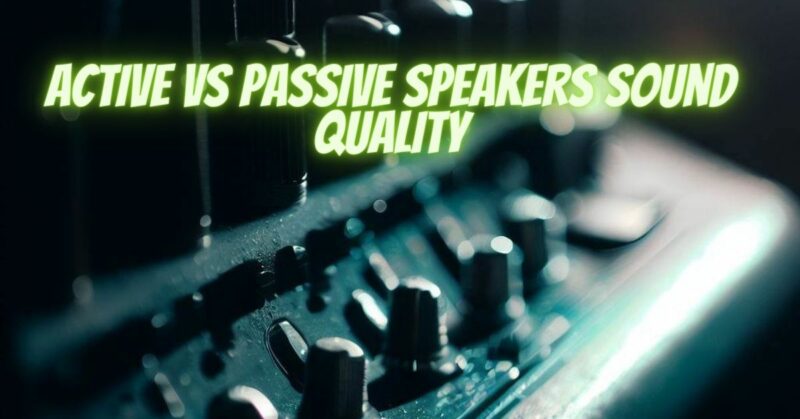When it comes to choosing between active (powered) and passive speakers, one of the crucial factors to consider is sound quality. Both types of speakers have their strengths and weaknesses, and understanding how they impact sound reproduction can help you make an informed decision that aligns with your audio preferences and requirements. In this article, we will explore the sound quality differences between active and passive speakers, as well as the factors that can influence their performance.
Active Speakers and Sound Quality:
Active speakers have a built-in amplifier, which is specifically tuned and matched to the speaker drivers. This integrated amplifier ensures optimal performance and sound quality, as it eliminates the need for external amplification that may not be precisely matched to the speaker’s characteristics. The synergy between the amplifier and the drivers results in a cohesive and balanced sound output, often delivering accurate sound reproduction across the frequency range.
Advantages of Active Speakers for Sound Quality:
- Enhanced Precision: Active speakers’ built-in amplifiers allow for precise control over the speaker drivers, minimizing distortion and optimizing the frequency response.
- Tailored Performance: Manufacturers can design and fine-tune the amplifier to complement the specific speaker drivers, resulting in a more cohesive and integrated sound profile.
- Active Crossovers: Active speakers often incorporate active crossovers, which divide the audio signal into specific frequency ranges for each driver. This technology ensures better driver integration and reduces phase issues, resulting in clearer sound imaging.
- Simplified Setup: Since the amplifier is built into the speaker cabinet, active speakers offer a plug-and-play experience, eliminating the need to select and match external amplifiers.
Passive Speakers and Sound Quality:
Passive speakers do not have a built-in amplifier and require external amplification to operate. The sound quality of passive speakers is heavily influenced by the quality of the external amplifier and the overall synergy between the speakers and amplifier. When paired with a high-quality and suitably matched amplifier, passive speakers can deliver exceptional sound quality, often favored by audiophiles for their potential for customization.
Advantages of Passive Speakers for Sound Quality:
- Amplifier Customization: With passive speakers, users have the freedom to choose amplifiers that suit their sound preferences, allowing for a tailored and personalized audio experience.
- Upgradability: Passive speakers can be easily upgraded by replacing individual components, such as the amplifier or speaker cables, to improve sound quality over time.
- High-End Potential: In high-end audio setups, top-quality passive speakers combined with premium amplifiers can achieve audiophile-grade sound quality and fidelity.
- Versatility: Passive speakers can be used in various audio setups and applications, from stereo systems to home theater installations, making them versatile for different listening environments.
When it comes to sound quality, both active and passive speakers can deliver exceptional performance under the right circumstances. Active speakers’ integrated amplifiers provide precise control and optimized performance, making them a convenient and straightforward choice for users seeking plug-and-play solutions with excellent sound quality. On the other hand, passive speakers offer the advantage of amplifier customization and upgradability, allowing audiophiles to tailor their audio setup to their specific preferences and potentially achieve higher-end sound quality.
Ultimately, the sound quality of both active and passive speakers will be influenced by various factors, including speaker design, driver quality, amplifier quality, room acoustics, and personal listening preferences. Whether you choose active or passive speakers, investing in high-quality components and ensuring proper setup and calibration will play a significant role in achieving the best sound quality possible for your audio enjoyment.


